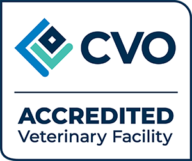Dental care for your pet
Dental disease is one of the most common and potentially harmful health problems for dogs and cats, it is also easily avoided.
Just like humans, dental care is an important part of your pet’s overall health. Dental disease is a silent process that may contribute to many other illnesses, including kidney, heart, and blood infections. When pets don’t receive the dental care they need to keep their teeth clean and their gums healthy, their mouths can harbor harmful bacteria.
What causes the bad smell? Bacterial buildup along the gum line gradually leads to gingivitis, or inflamed gums, and infection. If left unchecked, gingivitis will progress to periodontitis, or inflammation of the deep tissues surrounding and supporting the teeth. In severe cases, infection in the mouth can spread through the bloodstream to other parts of the body, including the heart and kidneys.

How to brush your cat or dog’s teeth
1 Start brushing your pet’s teeth early – 8 to 12 weeks old is best. If you brush every day, your pet will become familiar with the routine. Please note: You may need to stop brushing while your pet loses its baby teeth. Their mouth will be sore and handling may cause more pain. Continue once all permanent teeth come in.
2 Work with your pet’s mouth. Be patient and make it fun. Use love and praise, and try to practice at the same time each day to establish a routine. Choose a quiet time, such as late in the evening. Or, if your pet is highly motivated by food, try just before dinner so they will be rewarded for cooperation.
3 Handle your pet’s muzzle and touch their lips. Work up to rubbing the teeth and gums with your finger. Put a few drops of water flavored with low-sodium chicken or beef bouillon for dogs and tuna juice for cats in your pet’s mouth and they will begin to look forward to these sessions.
4 Rub your pet’s teeth gently with a bouillon or tuna-flavored washcloth or a piece of gauze wrapped around the end of your finger.
5 Finally, use a finger brush or a soft veterinary or human toothbrush to brush the teeth using the bouillon water or tuna juice. Hold the brush at a 45-degree angle to the tooth and brush gently from gum to tip. Brushing the tongue side of the teeth is less critical, but still recommended. Offer rewards and treats when your pet allows you to brush.
6 Consider other dental aids. A large selection of veterinary toothpastes, oral rinses, and gels are available to you. We can help you select the right one for you and your pet. These products all enhance your home care program, but daily brushing is best. Don’t use human toothpastes because fluoride and detergents can be harmful if swallowed. Hydrogen peroxide can be harsh on the gums and shouldn’t be swallowed either. Baking soda has a high sodium content and should be avoided in older pets.
7 Pick chew toys that will help keep the teeth clean. The Veterinary Oral Health Council puts its stamp of approval on effective dental products, so watch for that endorsement. Avoid natural bones and antlers, which are hard enough to fracture teeth and can cause gastrointestinal problems.
Common MOUTH MYTHS:
Pets are supposed to have bad breath.
False. An odour is not normal. Just like in people, bad breath in pets is often a sign of dental disease that requires treatment to safeguard your pet’s health.
Pets don’t need regular oral hygiene.
False. Even with regular dental cleanings, your pet still needs regular tooth brushing to keep breath sweet and pearly whites sparkling.
Pets’ mouths clean themselves.
False. While there are some natural enzyme systems at work in your pet’s mouth, they will not keep your pet’s mouth clean. Debris builds up on your pet’s teeth and requires brushing or rubbing to keep it clean.
Cats don’t need dental care.
False. Cats and small breed dogs often require more dental care than larger breed dogs.
Cats have stinky breath because they eat smelly foods.
False. An odour in your cat’s mouth is a sign of a health problem, and you should discuss it with us!
For more information on your pet’s oral health click here.
Information provided by DVM360 Dentistry 101



